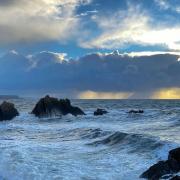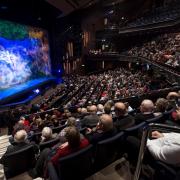Centuries of comings and goings have been centred on the city’s waters

As HMS Beagle departed Plymouth close on 190 years ago (27 December 1831) its captain and crew knew it would be a long time before they saw home again...five years, in fact. The captain was Robert Fitzroy, who’d become famous as founder of the Meteorological Office, weather and shipping forecasts. Charles Darwin was aboard, the ship’s naturalist, who would also find fame.
Plymouth has always been a city of the sea, with ships provided for the Hundred Years War in the 14th century, then becoming home base to the likes of Drake, Raleigh, Hawkins and Gilbert in the 16th. Plymouth Hoe celebrates Drake’s exploits, who departed in 1577 on his three-year circumnavigation, then was apocryphally playing bowls before setting out to duff the Armada eleven years later.
Voyages of exploration and the necessities of war give us much of Plymouth’s ‘raison d’être’, but there was more than this. When The Pilgrim Fathers sailed away from here to found New England (the NE corner of today’s USA), these English Puritans were choosing exile over religious persecution. The colony they founded was, of course, New Plymouth, Massachusetts. Old Plymouth’s fame was spreading.
It was not always departures. Sometimes it was homecomings. One of the more poignant was that of four of the so-called Tolpuddle Martyrs, a group of agricultural labourers from Dorset, sentenced to transportation in 1834 for the heinous crime of trying to club together to protect their living standards. It was 1836 before they were pardoned and four of the six came home to Plymouth.

Ironically, the year after these four souls had returned from Britain’s convict colony in Australia, another ship, The Tory, set off from Plymouth to begin the settlement of neighbouring New Zealand. The ship took 96 days to reach its destination, representatives of the New Zealand Company’ aboard to prepare the way for colonisation. The first migrant vessel, The Aurora, would arrive in New Zealand early in 1840.
READ MORE: 30 great days out in Exeter
Not all transits in and out of Plymouth involved ships. Six months after the conclusion of the First World War, an American seaplane, the Navy-Curtiss NC-4, swept into Plymouth harbour, early in the afternoon of 31 May, 1919, completing the first transatlantic crossing in 24 days. The pioneering plane was escorted in by three RAF flying-boats. It must have been quite a sight.
A few years later, March 1926 to be precise, Francis Drake would have been pleased to see a modern ship bearing his name bringing in the mail, proving it wasn’t always glamorous arrivals into the city.
Planes flying over Plymouth would not always be so welcome either. The Second World War brought ‘total war’ where civilian populations found themselves in the front line. The Plymouth Blitz of 1940-43 saw German bombs comprehensively smash the centre of the city.
One city church, St Andrew’s, was badly damaged, a parishioner steadfastly nailing a wooden sign over the porch door, which carried just one word, Resurgam (Latin for ‘I will rise again’). Today, a granite plaque marks the spot where one word typified a city’s and a nation’s defiance. Plymouth casualties numbered 1,172 dead and thousands injured. Incidentally, this church contains the best modern windows in the county, those of John Piper.
Happier times were celebrated when Sir Francis Chichester returned to Plymouth in 1967 aboard his 54-foot Gipsy Moth IV, marking the end of another circumnavigation. Unlike Drake’s, this one had been accomplished single-handed over nine months and was the first west-east solo-voyage to be completed, with just the one stop at Sydney.
The sea has brought people in and out of Plymouth for centuries and has also made it both a bastion for this island nation’s defence and a target for those wishing to assault us.
I end where I began though, with the second voyage of HMS Beagle. Its captain, Robert Fitzroy, was only a young man himself (26) when the ship sailed out of Plymouth on its five-year voyage of discovery. He desired a naturalist to sail with him and plumped for young graduate Charles Darwin (22). The two men would collaborate on a write-up of the expedition’s revelations, which included Darwin’s Journal and Remarks.
It is true to say that this was the Plymouth departure that changed the entire course of natural history.
PLYMOUTH FACTS
Plymouth is the South West’s largest city (excepting Bristol).
It became a city in 1928, a cathedral being designated in 1975.
Plymouth became the base of the Navy during the 16th century wars against Spain.
William of Orange chose to build the Royal Dockyard at Devonport in 1689.
“It is the only British city whose existence appears to be centred on war.” (N. Pevsner, 1952)
The Navy was still employing a third of Plymouth’s working-age men in 1979.
The Barbican is the site of the original town, as Drake knew it.
Next to the Barbican is Sutton Pool, which had ‘inhabitation for fishers’ in the 12th century.
On the Quay, the Old (1586) and New (1810) Customs Houses confirm the sea’s importance.
The Citadel was founded in 1670 by Charles II to keep the town in order.
The Royal William Victualling Yard (naval supply centre) was built from 1826-35 (Sir John Rennie).
Albermarle Villas was built 1828-30 for retired sea-captains (John Foulston).
Join our Facebook group to keep up to date with the latest news, events and people in Devon



























